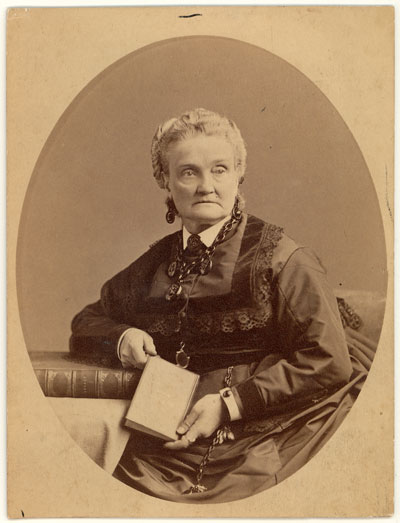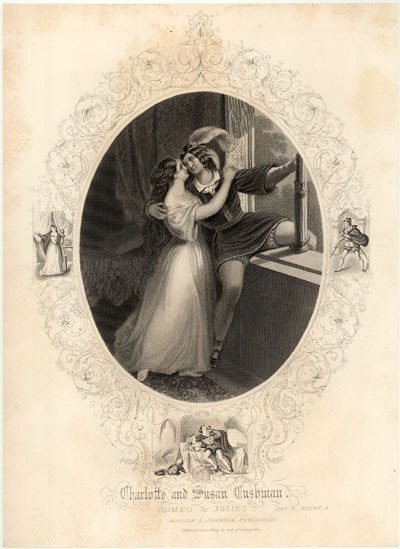Difference between revisions of "Wilson Collection: Charlotte Cushman"
From OutHistory
Jump to navigationJump to search| (6 intermediate revisions by the same user not shown) | |||
| Line 5: | Line 5: | ||
''(Photograph of Charlotte Cushman, circa 1870, and print, circa 1845, | ''(Photograph of Charlotte Cushman, circa 1870, and print, circa 1845, | ||
of Charlotte as Romeo and her sister, Susan, as Juliet)'' | of Charlotte as Romeo and her sister, Susan, as Juliet)'' | ||
| − | |||
| − | |||
'''Charlotte Cushman''' | '''Charlotte Cushman''' | ||
| Line 15: | Line 13: | ||
==''References''== | ==''References''== | ||
| − | <references / | + | <references/> |
| + | |||
| − | =[[Rich Wilson: Aspects of Queer Existence in 19th-Century America]]= | + | ==''To return to "Exhibit contents" links, click:''== |
| + | ==[[Rich Wilson: Aspects of Queer Existence in 19th-Century America]]== | ||
Latest revision as of 10:44, 26 November 2012
(Photograph of Charlotte Cushman, circa 1870, and print, circa 1845, of Charlotte as Romeo and her sister, Susan, as Juliet)
Charlotte Cushman
Acclaimed actor Charlotte Cushman specialized in “breeches parts.”[1] She played over thirty male roles. As Romeo she had a “convincing masculine stride…and...showed to advantage in a doublet.”[2]
Off-stage, she companioned with women. Poet Elizabeth Barrett Browning understood that Cushman and writer Matilda Hays “made vows of celibacy and of eternal attachment to each other—they live together, dress alike…it is a female marriage.”[3] But Emma Stebbins, sculptor of Central Park’s angelic Bethesda Fountain, replaced Hays as Cushman’s “wife.”[4]
References
- ↑ Carolyn Gage, “Charlotte Cushman (1816-1876),” in Gay and Lesbian Almanac, ed. Neil Schlager (Detroit: St. James Press, 1998), 470.
- ↑ The History Project, compiler, Improper Bostonians (Boston: Beacon Press, 1998), 57.
- ↑ Michael Bronski, A Queer History of the United States (Boston: Beacon Press, 2011), 71-72.
- ↑ Gage, 470.

